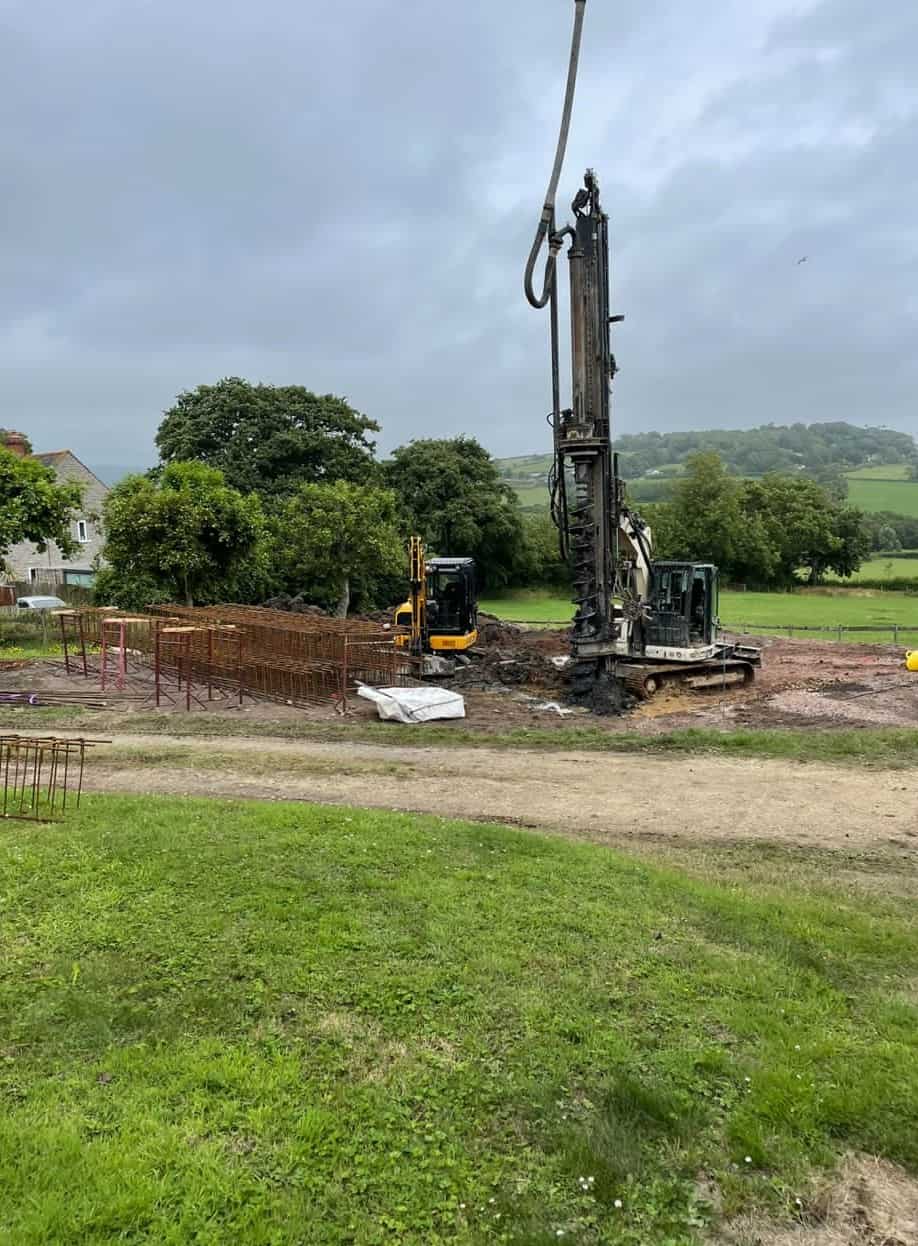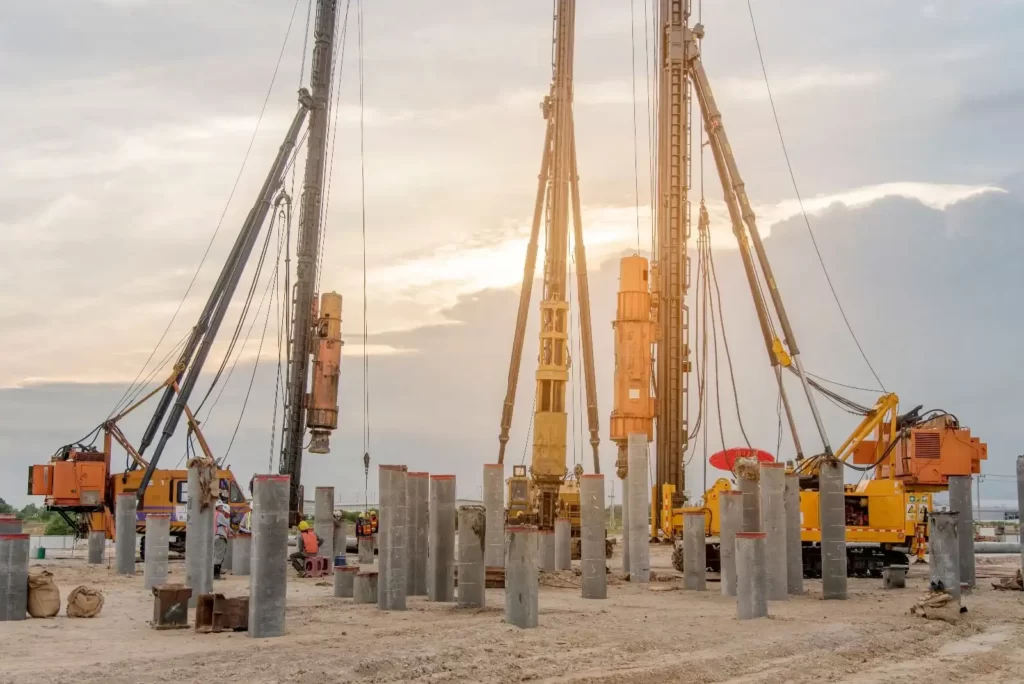Controlled Modulus Columns (CMC) provide a unique solution to unfavourable ground conditions for a range of applications, including wind turbines and waste facilities.
Scroll to read the full guide on CMC in detail…
Table of Contents
ToggleWhat are Controlled Modulus Columns?
Controlled Modulus Columns (CMC) are arranged in a grid network to efficiently distribute heavy loads from the structure above between the grid of CMCs and the ground. They are often mistaken for other deep foundation methods, such as drilled caissons or traditional auger-cast piles.
What is the Installation Process of CMC Construction?
To install CMCs, advance the displacement tooling to the desired depth and fill it with cement-based grout while the tooling retracts. To guarantee the grouting process continues, grout is discharged under controlled, limited pressure at the base of the hollow tooling. It placed CMCs down to more than 45 metres.
What is the Technical Specification of CMC?
The two general technical specifications of CMC are mentioned below
- Dig deep with soil treatment, reaching depths of up to 50 metres.
- Its 280-500mm diameter elements are expertly installed for maximum effectiveness.
How does it work at the Construction Site?
Let’s break down into 5 steps to understand how CMCs work:
- Soil Displacement: Reverse flight augers move soil laterally to consolidate the soil beneath the CMC.
- Densification: Through this process, densification of the soil helps to enhance the transfer of loads to the installed element. This means they take loads from above and dump them into more capable soils below.”
- Reinforcement: During installation, the material compacts and strengthens the ground it is to be installed on. These synergistically increase the ground characteristics to form a composite system.
- Load Distribution: When they are installed, the load from the structure is transferred to both the soil and the CMCs. The amount of load that is transferred to the soil is a function of the stiffness of the soil. It was also ascertained that stiffer soil offers a higher share of the stresses.
- Load Transfer Platform (LTP): To assist with off-loading, a layer of crushed stone referred to as a Load Transfer Platform (LTP) is normally intended to overlay the top of the CMCs. It assists in the equal distribution of loads from the structure to the platform’s CMC elements.

What are the Positive Aspects of Controlled Modulus Columns?
The following are the benefits of using the Controlled Modulus Columns Method over piling:
- Cost-Effectiveness: CMC is often less material-intensive and personnel-time-consuming than traditional piling systems, which translates into significant cost savings for construction projects.
- Time Savings: CMC’s fast and effective method of installation and consolidation reduced construction times and accelerated project delivery.
- Minimal Environmental Impact: CMC is environmentally friendly because it maintains the ecosystem and has a reduced physical impact on the environment by minimising soil disturbance and movement.
- Versatility: CMC might be employed in various construction activities, as it is well suited to various kinds of soil and environmental circumstances.
What are the Drawbacks of Controlled Modulus Columns?
While CMCs offer several advantages, such as cost-effectiveness and rapid installation, they also have some drawbacks:
- Limited application: Controlled modulus columns are quite effective for providing appropriate support in loose, granular or soft clayey soil, which may not be very effective on cohesive soil having high plasticity or where the water table is high.
- Construction limitations: CMC installation requires special tools and highly qualified human resources that are not always available in the market, particularly in densely populated urban centres or rural areas.
- Long-term performance: Despite the benefits that CMCs offer in improving the load-bearing capability and bearing capacity of the soil, these may be affected by settlement, consolidation, and differential movement if they are not well-designed and adequately monitored in the longer term.
- Risk of failure: Failures have been reported in CMCs due to incorrect design or installation. Factors that have contributed to these include inadequate reinforcement, the wrong choice of materials, and unfavourable ground conditions.
Despite these drawbacks, controlled modulus columns remain a valuable ground improvement technique in many geotechnical engineering projects, particularly when faced with challenging soil conditions or tight construction schedules.
Conclusion
In conclusion, because of their limitations, Controlled Modulus Columns (CMC) offer a particular option for solving ground conditions in several applications, such as wind turbines and waste facilities.



